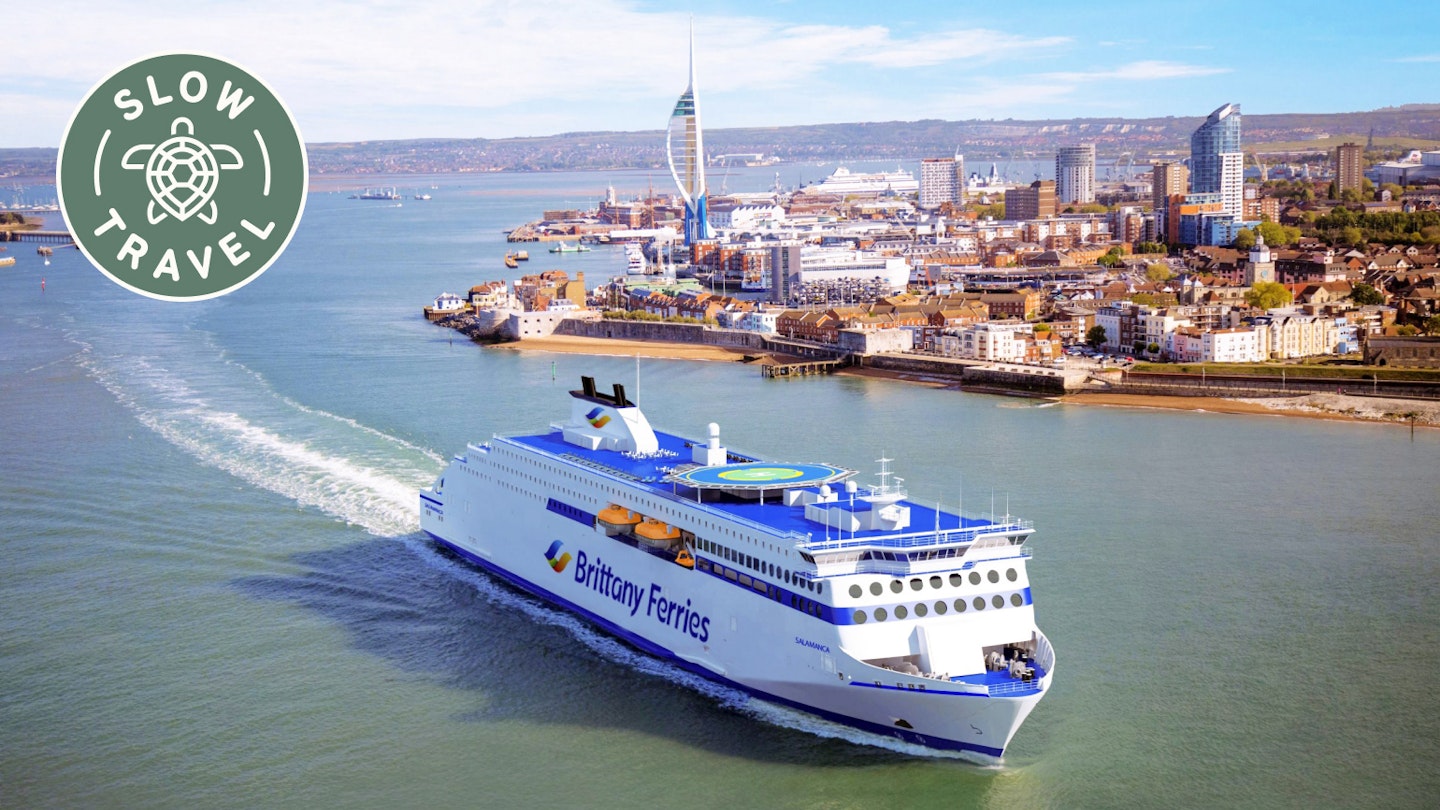Experience the Serenity of Ferry Travel from Ireland to Spain with iBestTravel
Our slow travel series explores how to embrace mindful journeys by boat, with insights on reaching your no-fly destination and what to see and do along the way. This article shares the experience of taking the ferry from Ireland to Spain.
I feel the sea-salty wind in my face, hear the roar of waves behind me. As we work our way around the coast of Brittany, I wonder why I don’t travel like this more often. Those drawn to the concept of slow travel are eagerly welcoming the expanding number of ferry routes connecting Western Europe. With near-constant airline delays, rising fuel costs, and climate concerns, exploring the world is becoming a complex endeavor.
Living in Ireland, we lack a land link to Europe, which limits options for eco-conscious travel. However, many ferry companies take passengers to Britain, France, and Spain daily. The journeys may be long, with the passage to Spain taking days, but that’s all part of the charm.
Traveling by ferry eases the conscience and offers a tranquil experience. The boat glides along at a slow, steady pace, allowing you to wander the decks at your leisure or relax in a comfortable armchair while enjoying the sea views. With choices of restaurants or simply the fresh sea air on an outdoor deck, the journey, while taking 32 hours, is a small price to pay if time permits.
The Departure: Dinner Onboard Before Midnight Launch
I was on a recently launched route from Rosslare in County Wexford, Ireland, to Bilbao in northern Spain aboard the Salamanca, the first LNG-powered ferry to operate between Ireland and mainland Europe. My trip began with a train ride from Dublin’s Connolly station to the ferry terminal at Rosslare Europort. The three-hour train journey was the first step towards ensuring an eco-conscious trip.
A short walk led me from the train station to the terminal. However, improved integrated transport links would greatly assist in encouraging more eco-friendly travel options, as late arrivals create long waits for ferry departures.
With no pedestrian access to the ship, car-less passengers like myself were driven into the hold by a minibus and directed to the decks via an elevator. Remarkably, there was no airport-style stress; my shoes and belt stayed on throughout the boarding process.
The Journey: A Cabin with a View and Multiple Dining Options
The journey was quiet and serene, thanks to the spacious boat and low passenger count. The lounges were softly lit, with vibrant design accents and abundant screens for information and entertainment.
With my cabin, I received a bracelet granting me access to the C-Club Lounge at the ship’s bow, offering a stunning view of the sea and a buffet refreshed for different meals throughout the day. The dining options included a variety of curries, salads, soups, sandwiches, meats, cheeses, and desserts, along with both hot and cold drinks, including red wine on tap—much appreciated by passengers.
Additional dining options included the Spanish Taberna de Tapas, Restaurant Azul, and the Plaza Mayor bar, all promoting a convivial atmosphere as passengers socialized over food and drinks.
Moreover, amenities such as duty-free shopping, interactive information areas, and outdoor sundecks with exercise equipment make the journey enjoyable for families, featuring three children’s play areas. Note that although Wi-Fi is available, the cost may encourage a digital detox during your trip.
Key Moments: A Visit to the Bridge and Spain-Inspired Artworks
One standout feature was the Salamanca-inspired art displayed throughout the passenger decks. The ferry features over 200 individual artworks inspired by the Unesco World Heritage site of Salamanca, with various pieces reflecting the region’s rich artistic heritage.
Among my favorites were the “Menina” statues by Spanish artist Felipao and a stunning mural by Rubén Sánchez on the outdoor deck, perfect for stargazing at night.
The Arrival: Onward to Bilbao’s Center
The ferry arrived in Bilbao exactly at 8 am on Sunday. Upon disembarkation, foot passengers waited for the cars to leave before being driven to the terminal. Planning the next steps is wise, whether organizing a taxi to the city center or locating the nearest train station that connects to Bilbao.
Enhanced public transport links and ferry terminal facilities would significantly benefit non-drivers looking to make the most of their ferry travel experiences.
The Cost of Travel
For foot passengers, the fare is approximately €235 one-way. This cost can increase significantly if you choose to reserve a cabin. Options include a four-berth cabin with a window for €214 or €186 for one without, while reserving a reclining seat for sleeping costs an additional €15, making it a more economical choice
Reflecting on the Journey
If I could do it all again, I would bring seasickness tablets, especially in rough weather. Though the deck can sway, the tranquility and soothing sounds of the sea make traveling by ferry vastly preferable to flying.
Experience the serenity of ferry travel with iBestTravel for your next eco-conscious journey to Spain.




